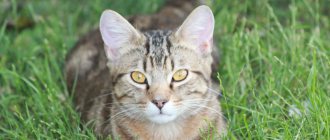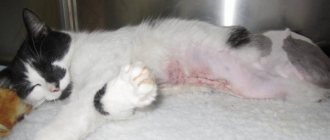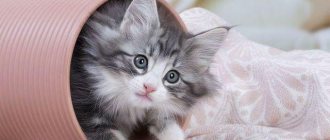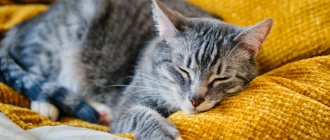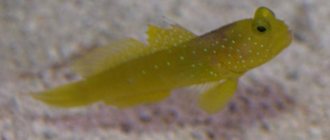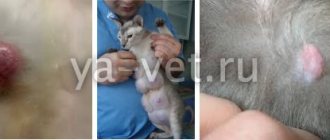Although cats are much more susceptible to these problems, swollen nipples and mammary glands are sometimes observed in male cats. An unspayed female is at greater risk than a spayed female. If unusual mammary swelling is noticed while the kittens are nursing, the kittens and their mother may need veterinary attention as the infection can easily spread between them.
Swelling of the nipples and mammary glands are external manifestations of enlarged mammary glands. Most cats have eight nipples, and if one or more nipples become enlarged or inflamed, one or more of them may be affected. Normal events in a cat's life can cause mammary tissue to swell, such as pregnancy and lactation. However, many infections and other conditions that can be life-threatening also cause breast enlargement.
Possible causes of breast swelling and swollen nipples in a cat
New growths of the mammary gland that affect a cat are malignant and benign in nature. In addition, they differ in the characteristics of their growth. Benign tumors under the skin develop slowly, but eventually reach impressive sizes and do not metastasize. A malignant compaction in the area of the mammary glands causes metastasis, the development of necrotic processes, as well as intoxication of the body. Cats with this disease do not live long. Benign pathologies of the organ are mammary hyperplasia. It manifests itself in the following forms:
- Focal;
- Fibroepithelial, cystic.
Moreover, both types develop due to high levels of progesterone in the cat’s blood, which is typical for unsterilized females.
Timely treatment of benign pathologies has a favorable prognosis if it was an unopened cyst or a complicated formation. In this case, there is a significant risk of wound infection. In total, benign tumors are detected in 15% of all pathologies in this organ.
Veterinarians give an extremely cautious prognosis for such a tumor due to the fact that when it reaches a size of more than 3 cm, it is extremely unfavorable. This is due to the frequent development of metastases in other organs, as well as the brain. This disease is also characterized by a high chance of relapse, even if it has already been operated on.
Inflammation can be caused by the penetration of pathogenic microorganisms into the gland; a tumor often indicates the development of mastitis and mastopathy. Hormones have a great influence on the condition of the mammary glands. Hormonal imbalances also often lead to swollen nipples and the appearance of a variety of discharge. Most often, cats develop cancer. The risk of cancer increases in animals aged 10–12 years.
If the glands are swollen, this does not always indicate the presence of pathology. Natural causes of this condition are pregnancy and breastfeeding. Nipple enlargement occurs in the fourth week of pregnancy. This sign is especially well expressed in nulliparous females.
If the female is not pregnant, then most likely the tumor is caused by pathological processes. They can occur as a result of hormonal imbalances, the use of hormone-based drugs, poor ecology, and poor nutrition. The most common breast diseases are:
- neoplasms;
- mastitis (serous, purulent);
- mastopathy;
- false pregnancy.
Causes
There are many reasons why mastitis begins to develop. At risk are animals with weak immunity, low body weight, or those who have just acquired any disease.
Other factors that provoke the development of the disease:
- bruises;
- hypothermia;
- mammary gland injuries;
- infection or fungus - inflammation occurs when bacteria penetrate through micro cracks in the skin or due to the influx of infected blood from internal organs during a systemic disease;
- complications during or after childbirth;
- stagnation of milk due to early weaning of kittens, small number of cubs in the litter, death of offspring;
- false pregnancy.
As a rule, mastitis develops under the influence of several factors, and is not a consequence of one.
Mastitis
Mastitis occurs due to stagnation of breast milk, infection with E. coli or staphylococcus. The disease is accompanied by:
- swelling of the mammary glands;
- increasing them in size;
- redness, cracking skin;
- increased temperature;
- discharge from the chest mixed with pus;
- in some cases - by compactions that can be felt during palpation.
Cats' behavior changes - they become apathetic, lethargic, and their appetite decreases. Touching the mammary glands with your fingers causes severe pain to the animal.
With mastitis, the ducts become inflamed and decrease in diameter, which impedes the flow of milk and leads to its curdling. As a result, the chest hardens, the cat begins to feel feverish, and she looks for a secluded place.
Untreated mastitis is dangerous due to degeneration into a malignant neoplasm and sepsis. Only a veterinarian can accurately diagnose the disease and prescribe the necessary therapy.
At the initial stage, owners can help the pet express milk by lightly pressing and massaging the nipple. This can be done if the animal does not have a fever. To stop lactation, apply a tight bandage to the mammary glands. The amount of fluid consumed by the female will have to be reduced for some time.
How to express milk to a cat
To express milk from a lactating female, it is recommended to use a special breast pump. If the device is not available, it is easy to make it yourself. To do this, take a plastic disposable 5 ml syringe. The piston is removed from it and the top is evenly cut off along with the nose, which is intended for the needle. Next, the cut is melted over fire. Allow the plastic to cool slightly and smooth out the edge with your fingers so that it is smooth and without sharp protrusions. Put the piston in place.
To express milk, the device is applied to the skin so that the nipple is in the center of the cut out circle. When the piston is raised, a vacuum is created in the breast pump and milk flows into the container. It is enough to do this procedure once a day. The entire process of making the device and pumping is clearly shown in the video:
Before using a pumping device, you need to make sure that your cat does not have a blocked milk duct!
Types of neoplasms on the chest in cats
Tumors in the mammary glands can be benign or cancerous. Benign formations, such as an adenoma or cyst, can reach impressive sizes. They cause inconvenience to the animal, but do not pose a threat to life.
Malignant tumors often cause death in cats. They can invade areas outside the gland and grow into neighboring organs and tissues. These tumors metastasize, which complicates treatment.
Benign tumors most often arise due to hormonal imbalance caused by the use of hormones or cessation of feeding the offspring. In addition, neoplasms can appear after injury to the mammary glands. Another common cause of cystic glandular lesions is genetic predisposition.
Breast cancer in a cat
The vast majority of tumors in cats are malignant. Breast cancers, such as carcinoma and sarcoma (see photo), grow rapidly and affect other organs. Malignant tumors are difficult to treat because they usually manifest themselves in the later stages of the disease.
Cancer
Malignant neoplasms are dangerous because they develop latently over a long period of time. First warning signs:
- breast enlargement and thickening;
- lethargy, apathy;
- refusal to eat;
- sudden weight loss.
At the initial stage, the tumor can be removed and the animal’s life can be saved. According to statistics, 80% of animals survive with timely treatment of stage 1 cancer. At stage 2 of oncology, surgery and chemotherapy treatment are performed - only 50% of cats survive.
In the later stages, the prognosis is pessimistic. Cancer metastasizes to the brain, liver, and other organs. The tumor is constantly growing, growing into neighboring tissues - it is impossible not to notice it. In such situations, treatment is symptomatic, its goal is to relieve pain and improve quality of life.
Chemotherapy and radiation therapy are carried out only in a hospital setting under the constant supervision of veterinarians. Some owners refuse them for fear of their pet's baldness. The fears are groundless - the cat’s fur will remain, unlike human hair.
Owners must understand that it is impossible to help the animal at the stage of tumor disintegration. The most humane way is to euthanize him.
Associated symptoms in the presence of pathologies
The onset of a pathological process is indicated not only by the inflammatory process, lumps and discharge. With mastitis, the following symptoms can be observed:
- hot and bright red skin of the areolas;
- animal anxiety;
- soreness when palpated;
- bloody, purulent or cheesy discharge from the nipples;
- change in behavior (apathy, lack of mobility, desire for solitude);
- compulsive licking of the affected area;
- temperature rise to 40 degrees.
The following signs are characteristic of malignant formations:
- clearly defined boundaries;
- hardness and immobility;
- normal skin temperature in the affected area;
- no pain on palpation;
- rapid tumor growth;
- the appearance of ulcers, which may later burst;
- weight loss and loss of appetite;
- the occurrence of metastases.
When a cat is pregnant or breastfeeding, she has a small lump (swelling). A similar situation can be noticed in the case of a false pregnancy. All these phenomena have similar manifestations to tumors, although they are not tumors. But because of this, many owners may already be wondering what to do and how long their pet will live.
Any, even minor, bump in the nipple area should cause concern. Often the pathology is a nodular formation located in the thoracic region. It often affects simultaneously several lobes of the gland, localized in one specific part of the body. Cystic formations may appear.
Adenocarcinoma, being the most common tumor of this organ, has the following manifestations:
- A minor formation that is located under the skin;
- Inflammation of tissue near the tumor;
- Development of ulcers, their bleeding (If they burst);
- Growth of lymph nodes;
- The appearance of pain;
- Fever;
- Development of the necrotic process;
- Significant decrease in appetite.
In the case when a cat has certain seals in the nipple area, the owner needs to immediately show it to the veterinarian to determine their nature. Based on the timeliness of detection of the pathology, as well as its type, not only the treatment depends, but also the possibility of survival of the pet itself.
What is the problem and how does it manifest itself?
Symptoms of mastitis
When a cat has enlarged one nipple or both mammary glands, an inflammatory reaction may manifest itself in a similar way. The disease is more often observed in females during feeding of kittens, during which milk stagnation occurs. The occurrence of a lump near the breast is influenced by staphylococcal infection or E. coli activity. Pathogenic microorganisms enter the cat's body through the milk ducts or through the bloodstream. Mastitis can be recognized by the following signs:
- swelling of the mammary glands;
- heat;
- redness of the skin on the abdomen;
- compactions and small bumps;
- bloody or purulent impurities in the milk of a nursing cat;
- deteriorated general condition.
Manifestation of pregnancy
If a cat's mammary glands are swollen, this is the first signal of kitten conception. This sign is already observed after a month, especially in young individuals who become pregnant for the first time. After another 2-3 weeks, the owners note that the female not only has enlarged breasts, but also begins to produce milk. Closer to childbirth, the mammary glands become 2 times larger. If the increase is much greater, then you should see a veterinarian to rule out pathology.
False pregnancy: how to recognize?
This condition is not uncommon, and owners observe that the cat’s mammary glands are swollen and the appetite has increased, which is why they mistakenly believe that the animal has become pregnant. A similar violation is observed in a female who took a castrated cat for mating. The occurrence of false pregnancy and swelling of the mammary glands is influenced by pathology of the reproductive system or hormonal imbalance. To confirm successful conception, you need to contact a veterinarian who will prescribe an ultrasound diagnosis, but not earlier than a month after mating.
What is mastopathy?
If the nipples turn blue and the mammary glands are swollen, this may indicate such a disease. Feline pathology is rare and most likely occurs after sterilization of an individual less than a year old. Mastopathy is a serious disease of the mammary glands, which often develops into oncology. With pathology, the female’s nipples look bad, and the skin near them is red and swollen. A lump appears in the chest area, and the cat exhibits other symptoms of mastopathy:
- bloody discharge from the nipples;
- seals;
- pain on palpation of the mammary glands.
Benign neoplasms: are they dangerous?
When a kitten or an adult has a blue area near the nipples, while it is dry and hard, this may be a signal of a tumor process. Often, cat owners observe that a benign tumor has formed after an injury or hormonal imbalance. Other factors also influence the development of the problem:
Pathology occurs more often in overweight animals.
- genetic predisposition;
- obesity;
- use of hormonal contraception;
- lack of sterilization.
A benign tumor is characterized not only by swelling of the mammary glands, but also by other signs:
- compaction that can be felt by palpation;
- enlarged lymph nodes;
- nipple discharge;
- changed behavior.
Oncological process
The Sphynx and other pet breeds often suffer from cancerous tumors, the development of which is influenced by various negative factors. When advanced, the neoplasm metastasizes to nearby and distant internal organs and lymph nodes. This deviation of the mammary glands poses the greatest danger to the health and life of the pet. At the initial stages, it is possible to recognize oncology in cats based on the following clinical picture:
- white or red spots on the nipples;
- swelling of the mammary glands;
- large lymph nodes;
- compaction when palpating the cat’s breasts;
- lethargy and causeless laziness.
In later stages, not only the lymph node in the mammary glands is enlarged, but also cancer cells spread to nearby tissues and organs. Often in oncology, metastases are recorded in the lungs, liver or brain. If the cancer process spreads, there is no chance to save the cat and veterinarians recommend euthanizing the animal to alleviate its suffering.
Mastopathy
Mastopathy is an inflammation of the mammary gland, accompanied by the appearance of cysts and other lumps. A disease without treatment and constant veterinary control can become an impetus for the formation and proliferation of cancer cells.
Mastopathy is more common in individuals who have given birth and is practically not diagnosed in cats that were sterilized at an early age (before a year or a little over a year).
The signs of the pathology are in many ways similar to the symptoms of mastitis:
- the cat's chest is swollen;
- bleeding appeared;
- the glands are visually enlarged;
- touching causes pain to the female.
Timely identified mastopathy responds well to treatment - cats tolerate medications and injections well. The disease at the initial stage is treated with drugs containing iodine and immunomodulators.
In advanced cases, when ulcers appear on the skin, conservative therapy is ineffective. Serious lesions require surgery, during which the affected glands, as well as the uterus and ovaries, are partially or completely removed. The animal will require long-term rehabilitation.
How to tell if your pet is sick
You need to monitor your pet's behavior and well-being very carefully. Especially during such an important period of life as pregnancy and feeding offspring. This is always stressful for the body, which means the cat is more susceptible to various infections and diseases.
Symptoms of mastitis in the first stage:
- redness of the nipples;
- slight swelling and compaction;
- increase in body temperature;
- the occurrence of microcracks;
- discharge of a curdled mass when pressing on the chest.
The pet reacts painfully to any touch and often licks its tummy.
As mastitis moves to the next stage, redness and swelling increase, the temperature consistently exceeds the norm by at least 1C, and the tissue around the mammary glands becomes very hard. When pressed, a yellowish or grayish liquid with drops of blood or pus is released.
In these cases, immediate contact with a veterinarian is required. If this is not done, the disease becomes more severe. The animal shows the first signs of intoxication of the body - apathy, fever, weakness.
Diagnostics
To differentiate the form, as well as the type of pathology, the treating veterinarian, in addition to examination and palpation, based on the need, prescribes the following diagnostic measures:
- Blood analysis. Often these are general and biochemical. They allow you to assess the pet’s condition and, if there are other pathologies, identify them;
- Ultrasound and chest x-ray. With their help, the exact localization of the main tumor is revealed, as well as the presence of metastases and from the location;
- Biopsy, or fine-needle aspiration of pathological tissues and lymph nodes for cytological examination;
A histological examination of biopsied tissues can also be used to identify the exact type of formation that affects the cat. Due to this, the appropriate treatment for the tumors is selected.
What to do
Cancer on the nipple
First of all, it is worth noting that although cancer can occur at any age, it most often affects older cats, at 8-10 years of age.
Animal behavior. The cat feels great at the very beginning. The cancer begins and grows, but no signs are noticeable. The nipples, like the entire body of the animal, look the same as those of a healthy cat. Changes can only be detected starting from the second stage. If you then intervene in the course of the disease, you can expect to save the cat.
But when one or more nipples are swollen, when her appetite and lifestyle changes, she turns from active to withdrawn, and is rapidly losing weight, then it’s worth paying attention to. And first you need to examine the cat. Feel her nipples and lymph nodes.
Stages of the disease. Cat cancer also has 4 stages of development, just like in humans. At the first stage, there are no special visible signs of the disease. This can only be discovered by chance during a detailed check with analysis.
Diagnostic methods
What to do if your cat has a swollen nipple? First of all, the animal is examined by a specialist. Next, the cat's blood and the substance discharged from the chest are taken for analysis. Bacteriological examination of mammary gland secretions allows us to identify the causative agent of the disease. Cytological analysis of the fluid shows the degree of development of mastitis or another disease.
Ultrasound is a universal research method for both mastitis and tumors. Using ultrasound, the affected area and the size of the compaction are determined, as well as the presence of contents in the gland ducts.
To find out the nature of the compaction, a biopsy is performed. Cells from lymph nodes located in the affected area are also taken for analysis. It is possible to clarify the presence of metastases in malignant neoplasms using the X-ray method.
Causes
Why are my cat's mammary glands swollen? The most common reasons are: :
- pregnancy;
- mastitis;
- false pregnancy;
- mastopathy;
- benign neoplasms;
- cancer.
© shutterstock
If the cat is not pregnant, then you need to contact your veterinarian to determine the cause.
Therapy
Treatment for hard mammary glands in a nursing cat depends only on what causes these lumps. For diseases such as mastopathy and cancer, a qualified veterinarian prescribes conservative therapy or surgical treatment. In the first case, the animal takes medications aimed at stabilizing hormonal levels and vitamins. In the second case, surgical intervention is performed, during which the mammary gland and nipple are removed. Subsequently, they are sent for laboratory testing.
In some cases, there are indications that do not allow surgery. The reason for refusal may be a weak heart. Then there is another way - chemotherapy. This method is also quite serious; it is prescribed when the purr has a strong liver and kidneys. Chemotherapy for cats is carried out using the following drugs:
All final decisions are made after a detailed study of all influencing factors. The opinion of experts depends on:
- stage and type of cancer;
- tumor localization;
- general health of the animal;
- material capabilities of the owners.
Radiation therapy has become an analogue of radiation therapy. This procedure is used not only to eliminate cancer cells, but also to neutralize their consequences. Ionized radiation, entering the body, prevents cancer relapses. Based on the type of beam, this therapy is divided into x-ray therapy and gamma therapy.
Deviations from normal indicators of the number of nipples
There are a number of exceptions that go beyond the normal number of nipples:
- there may be more or less than 8;
- they are not located parallel to each other;
- not every one of them has a pair.
Nipples that do not have a pair are usually underdeveloped and do not have mammary gland ducts. During pregnancy, they do not swell and remain in their normal state.
Nipples may differ in size and even color from each other. These are individual characteristics of a particular pet that do not pose any harm to health. For feeding kittens, it is not the number of nipples that is important, but their functionality.
There is an opinion that there are some deviations from the norm in the number of nipples in cats of different breeds. Indeed, say, hairless cats (Sphynxes) often have an odd number and an asymmetrical arrangement. However, this is not even considered a fault of the breed.
In general, there is no direct relationship between the number of nipples and the breed of cat.
Treatment
Once a pet has been given a disappointing diagnosis of a tumor, removing the cat’s mammary tumor is often the only way to save his life. If the pathology is benign, then after removal surgery there will be an almost complete recovery. But it is important to do this before inflammation or ulceration begins.
In cases where surgical treatment is not possible for certain reasons, conservative methods are used. Thus, for benign pathologies, the essence of such therapy will be to stop the growth and development of the pathology, as well as to prevent infection of the abnormal tissues. In addition, it is necessary to increase the animal’s immunity level.
For this purpose, various antitumor and antibacterial agents are used. This could be Dokosorubicin. Also, if there is cancer in a pet, Cyclophosphamide is used, which has a cytostatic effect. Non-steroidal anti-inflammatory drugs are also prescribed, which include Meroxicam, and painkillers and antibiotics are used.
When adenocarcinomas are detected, they are surgically removed. In this case, resection of pathological tissues is carried out, along with all tissues of the organ, to prevent metastasis. The procedure consists of several stages, due to the fact that a complete mastectomy when performed in one stage is extremely difficult for animals to tolerate.
The course of treatment for the cat is prescribed depending on the results of the tumor examination. The benign lump is excised, after which the animal makes a full recovery. The cancerous lesion will also have to be removed to save the pet’s life. However, in this case, additional therapy is usually required after surgery to reduce the likelihood of relapse.
Mastitis in a cat can be cured with ointments, injections and tablets. As a rule, veterinarians prescribe Gamavit or Catozal, a solution of calcium gluconate. Injections of Travmatin and Mastometrin are used both for the treatment and prevention of mastitis. The duration of the course and dosage are determined by the doctor, taking into account the pet’s weight and other conditions.
In severe cases of purulent mastitis, antibiotics are prescribed. If there is a significant increase in body temperature, the animal is given an injection of analgin with diphenhydramine. When pus flows from the nipples or they bleed, it is necessary to treat with Chlorhexidine or hydrogen peroxide. If your nipples are inflamed, it is recommended to smear them with products that have a wound-healing and analgesic effect. The condition of swollen glands can be normalized with the help of ointments (Mastiet Forte, Gamabiol, Iruksovetin, Levomekol, Trauma-gel).
Surgery is the main way to combat malignant tumors. The veterinarian prescribes surgery after assessing the size of the lesion and the condition of the cat. Depending on the degree of growth of pathological tissue, one or more mammary glands are removed. In case of bilateral pathology, 2 operations are performed with an interval of 14 days. However, when cancer cells penetrate the skin, the affected area on the abdomen is completely removed in one operation.
Doctors usually recommend removing lymph nodes to reduce the risk of cancer cells growing back. In some cases, it is also necessary to remove the ovaries and uterus.
Chemotherapy is used in the treatment of cancer in animals. It is usually carried out to prevent relapses. Cats are given such strong drugs as Doxorubicin and Cyclophosphamide. These drugs can completely stop the development of tumor processes. However, these medications have many side effects and lead to severe intoxication. Pets can only be treated with these drugs under the close supervision of a specialist.
In some cases, it is impossible to operate on a cat due to its age or concomitant chronic diseases. In this case, chemotherapy becomes the only way to stop the growth of the tumor and prolong the life of the pet.
Sometimes surgery is refused because the size of the lump is too small. In such situations, chemotherapy can give excellent results and lead to a complete recovery of the cat.
Folk remedies
Folk remedies are used, as a rule, in the treatment of mild forms of mastitis. Warm compresses with herbal infusions have a positive effect. For lotions, decoctions of oak bark, sage and chamomile are prepared. It is very important that the infusion is not hot. Excessive heating of the affected area can make the situation worse.
Damaged nipples can be gently massaged with camphor or ichthyol oil. After this, a bandage should be applied to the lubricated areas for a short time to prevent the animal from licking the oil.
With malignant tumors, the cat may experience severe pain. In this case, the use of folk remedies as additional therapy is allowed. Decoctions of herbs such as calendula, spurge, arnica, wild rosemary and knotweed will help slow down abnormal cell growth and reduce pain.
For benign formations, decoctions of burdock, cinquefoil, plantain, tartar, fireweed will contribute to a stable improvement in the pet’s condition. For cancerous tumors, these herbs will help contain the development of metastases.
Kinds
There are several forms of the disease. The initial stage is usually accompanied only by redness and slight swelling of the nipple, and a slight increase in body temperature. It often goes unnoticed by humans. If left untreated, it progresses to more severe forms of mastitis:
- Serous . The mammary glands enlarge significantly. They become hot and hard, and the cat reacts painfully to touch. When pressed, liquid with white flakes is released from the nipple.
- Catarrhal . When pressed, a liquid is released, the consistency of which is similar to sour milk.
- Fibrinous . Characterized by increased body temperature and enlarged lymph nodes. On palpation, “crunching” sounds are heard.
- Purulent - a complication of previous forms. An unpleasant-smelling fluid mixed with blood and pus is released from the chest. In most cases, at this stage the disease becomes chronic. The mammary glands fill with connective tissue, which can lead to a lack of milk in the future.
The hemorrhagic form is the most severe. Extensive hemorrhage occurs in the skin and mammary glands, staining the tissues bright red. The animal's temperature rises and it becomes feverish. Surgery required.
What to do
The first thing to do is to carefully examine the nipple yourself. To understand the nature of the disease, whether there is a tumor under the nipple and to see the cat’s reaction.
The next step is to take your pet to a doctor for examination . Only a specialist can accurately determine the cause of the tumor and decide what needs to be done. It may be necessary to remove breast tumors surgically if the cancer is in its early stages. Or, if it is mastitis, and the tumor is the remains of milk. You will need to take a course of antibiotics. In any case, both diagnosis and treatment are prescribed only by a veterinarian
Treatment of breast tumor
Malignant tumor . The main method of treatment for all types of breast tumors is surgery to excise the overgrown gland tissue. If a malignant tumor is detected, then nearby lymph nodes are additionally removed, since they are most likely also affected. After the operation, the wound area is significant and has a large number of stitches.
If the cat has not been sterilized before, then in parallel with the operation, doctors advise removing the ovaries and uterus, this will lower the level of estrogen in the animal’s body and protect against further complications.
In the postoperative period (if the malignancy of the removed tumor is confirmed), a course of chemotherapy is prescribed, which is necessary to destroy the remnants of pathological cells. Therapy consists of drip administration of antitumor drugs at intervals of 3 weeks. The medications are easily tolerated by cats and do not cause thinning of the coat.
Benign tumor . Breast adenoma is also removed to exclude the possibility of cell degeneration.
If, due to the reasons identified during the examination of the animal, the operation becomes impossible, then conservative treatment is prescribed, the purpose of which is to stop the growth of the tumor with the prevention of injuries, as well as to increase the animal’s defenses. Special antitumor and antibacterial agents are used.
When a cat's mammary tumor ruptures, this indicates that the disease has become incurable. The owner's follow-up should focus on improving the animal's quality of life, pain management, and preventing bacterial infection. Do not forget that the exposed mammary tumor should be treated with antiseptic solutions and covered with a blanket so that the cat does not have the opportunity to lick it.
Caring for your cat after surgery
The result of treatment depends not only on timely surgery. Surgical removal of the tumor is only the initial stage of the fight against cancer. Postoperative care plays an important role. A pet who has undergone surgery must be provided with complete rest. In addition, you must follow your veterinarian's instructions and follow all recommendations regarding your cat's diet.
The seam must be regularly treated with a special product, which is also prescribed by the veterinarian. In addition, the animal must be given a number of medications, strictly observing the time of administration and dosage. This will help avoid complications.
For some time after removal of the tumor, the cat must wear a special blanket. It is designed to protect the seam and prevent inflammation. The owner must carefully ensure that the blanket is held securely and does not come undone.
Scheduled inspections are carried out weekly. To assess the animal’s condition and understand how its recovery process is going, the veterinarian will take the necessary tests. However, even the most experienced doctor cannot say exactly how long a cat will live after surgery.
Why is my cat's nipple swollen?
Any hormonal changes in a cat’s body are not without consequences. For example, the behavior of a pet changes. From a calm “pillow” on the sofa, she turns into a restless, unhappy creature who is worried about something. Or, a swelling or small lump may appear on the nipple, which will disappear in a day or two. But most often, with hormonal fluctuations in a cat’s body, all nipples swell.
It is also important that the cat can also have problems with hormones. Therefore, such a phenomenon as: a swollen nipple can be equally expressed in both male and female cats.
What if the owner notices abnormal phenomena. Such as only one nipple is swollen. What could it be? So what should I do? Wait until other signs of a surge in hormones appear? Change food? Check stool? Look in reference books for clues to similar symptoms? Or should I rush to the doctor with my cat?
So, only the cat's nipple itself is swollen. And besides its swelling, you can notice other symptoms :
- Redness;
- The cat is lethargic and refuses even its favorite food;
- Perhaps sores have appeared around the nipple;
- When we touch the mammary gland, the cat begins to hiss or quickly runs away (this indicates that it is in pain).
What could it be? There are several explanations for this phenomenon, and it is too early to draw conclusions until the doctor has examined the tumor on the cat's nipple.
And yet, what symptoms of diseases is that the cat’s nipple is swollen?:
- Cancer;
- Mastitis, as a blockage of blood vessels in a cat's nipple;
- Benign tumor.
Preventive measures
Owners of domestic cats should carefully monitor the condition of their pet's nipples, since tumors in them are most often malignant. If even small balls appear under the skin, it is necessary to urgently show the animal to a veterinarian. To protect your pet from this terrible diagnosis, you need to follow the recommendations of specialists:
- Sterilize a nulliparous female before puberty. Many scientific studies have shown that spayed females have a reduced risk of developing malignant tumors on the mammary glands.
- Do not use hormonal contraceptives. During the period of female heat, people usually use veterinary drugs that neutralize its symptoms. These medications contain hormonal substances that disrupt the activity of the animal’s own gonads.
- Use quality feed. Cheap food with a large number of additives and carcinogens is one of the reasons for the development of cancer in animals.
If the nipple is swollen due to mastitis or mastopathy, then the prognosis in this case will be favorable. However, mastitis also causes a lot of trouble for the animal, so it is better to try to prevent it. Prevention of this disease includes the following measures:
- regular antiparasitic treatment;
- eliminating the possibility of your pet getting injured and hypothermia;
- preventing stagnation of milk in the breast of a nursing female, applying kittens to all nipples;
- frequent change of bedding for a female with kittens;
- trimming babies' claws if they damage the skin on the mother's chest;
- the use of special ointments for cracks in the areolas and nipples.
What to do if your cat has a swollen nipple?
Any signs of disease in cats should be investigated, both serious and insignificant at first glance.
For example, such as if a cat's nipple is swollen. Because these animals are patient and are ready to put up with the fact that something is going wrong in their body. They only begin to be capricious when the disease takes on serious forms, and nothing can be returned back. That is why, if you just notice that your cat’s nipple is swollen, sound the alarm: collect information, analyze the cat’s recent behavior, whether there are other signs, perhaps the other nipple is swollen, or ulcers have appeared, etc. Whatever it is, it’s worth noting all this and going with your cat to the veterinary clinic for a detailed examination as soon as possible.
What could be a sign that the nipple is swollen and red? What actions are needed?
Prevention
It is important to know not only how to treat mastitis in a cat, but also how to prevent it. Below we have prepared a list of useful tips for you in this case:
| Monitoring your cat's fluid intake | If there are few kittens, then limit the amount of liquid you drink for the cat who has given birth. |
| "Manicure" for kittens. | Also, be sure to trim your kids' nails. They can scratch their mother's nipples while sucking. This will cause bacteria to enter the cat's mammary glands. |
| Diet of a pregnant and lactating cat | Be sure to discuss the diet of your pregnant and lactating cat with an experienced veterinarian. Some types of food (cottage cheese, mineral or vitamin supplements, etc.) stimulate milk production. |
| Maintain animal hygiene | Dirty bedding, floors, and tray can lead to bacterial contamination of the nipples. If necessary, wash the skin with a decoction of oak bark, a very weak solution of potassium permanganate (literally a crystal in half a liter of water). If you notice cracks, be sure to lubricate them with cream. |
| Avoid injury | Place the pet's bed away from drafts. |
| Deworming, preventative treatment against fleas and ticks | Carry out deworming in a timely manner (parasites greatly weaken the immune system). Don't forget about ticks and fleas. They not only reduce the body's defenses, but also cause itching. As a result, the cat scratches itself, thereby opening the “gate” for pathogenic bacteria. |
Treating cat mastitis at home
Complicated types of mastitis in cats require the help of a veterinarian. You can treat a sick pet at home only with catarrhal or serous mastitis. The owner has the power to alleviate the animal’s condition and speed up the treatment of mastitis. To do this, it is permissible to use a light stroking massage. If touching causes pain or discomfort in the cat, tactile stimulation is abandoned. Rubbing with ichthyol or camphor oil helps. The product is applied after the massage. The smeared surface is covered with film and bandaged.
When the mammary glands of a nursing cat become overfilled and tense, they resort to expressing milk. To limit secretion production, reduce the amount of water in the bowl. It is advisable to switch the cat to dry food and give water only when feeding.
The most important thing when treating mastitis in a cat is to follow all the instructions prescribed by the doctor.
When it is impossible to treat
The cat owner should recognize symptoms that indicate the inadmissibility of self-treatment at home. If at least one of them appears, you should urgently seek help from a specialist. This list includes:
- soreness and severe hardening of the glands;
- enlargement of nearby lymph nodes;
- cloudy discharge from the nipples with traces of pus and blood;
- fever, fever.
Severe disease requires medical intervention. Treatment of mastitis in such cases consists of a complex of analgesic, antibacterial, and immunomodulatory medications.
Folk remedies
It is useful for a sick cat to apply warm compresses to the area of the affected organ. Decoctions or infusions of chamomile, oak bark, sage, string, and birch leaves are used as a medicinal liquid. To prepare the drug, one tablespoon of herb or collection is poured with boiling water and infused. After filtering, a piece of gauze is moistened in the solution and applied to the sore spot. Place polyethylene on top and lightly bandage it. The procedure lasts 20-30 minutes and is repeated up to five times a day. Cabbage leaves used to treat mastitis do not have noticeable effectiveness, so they are used only for very mild forms of mastopathy.
